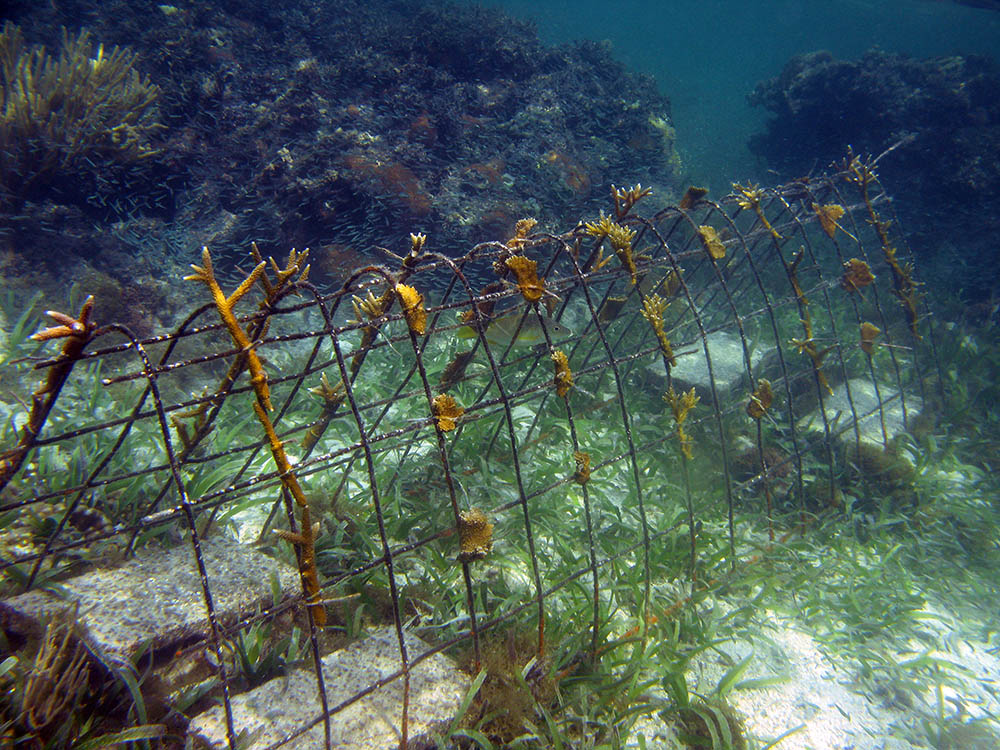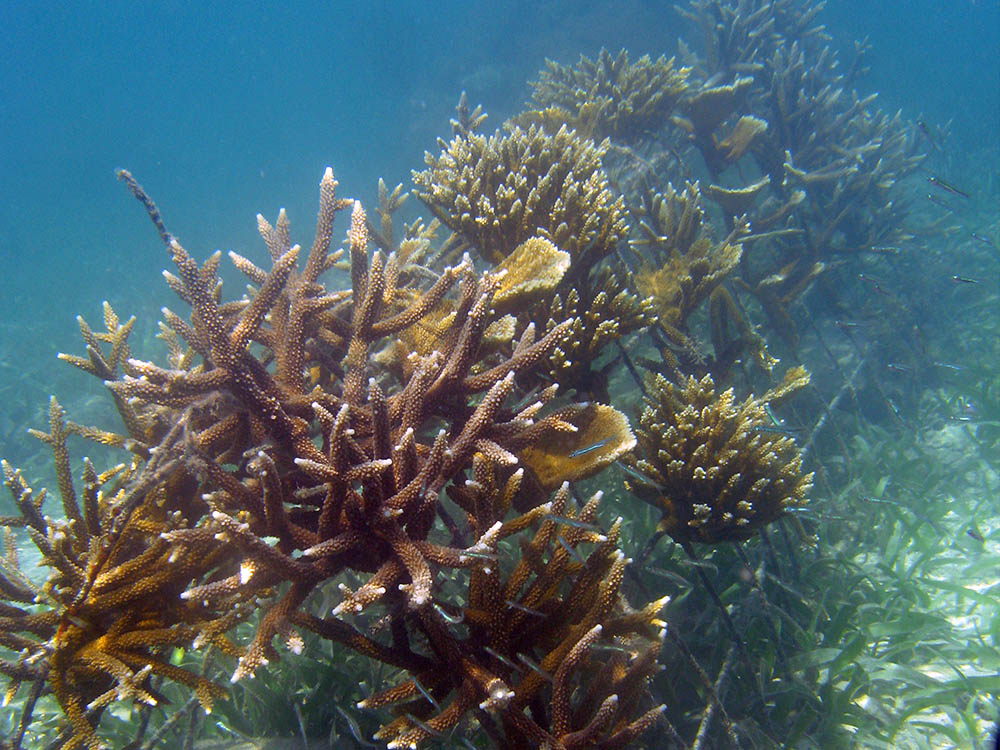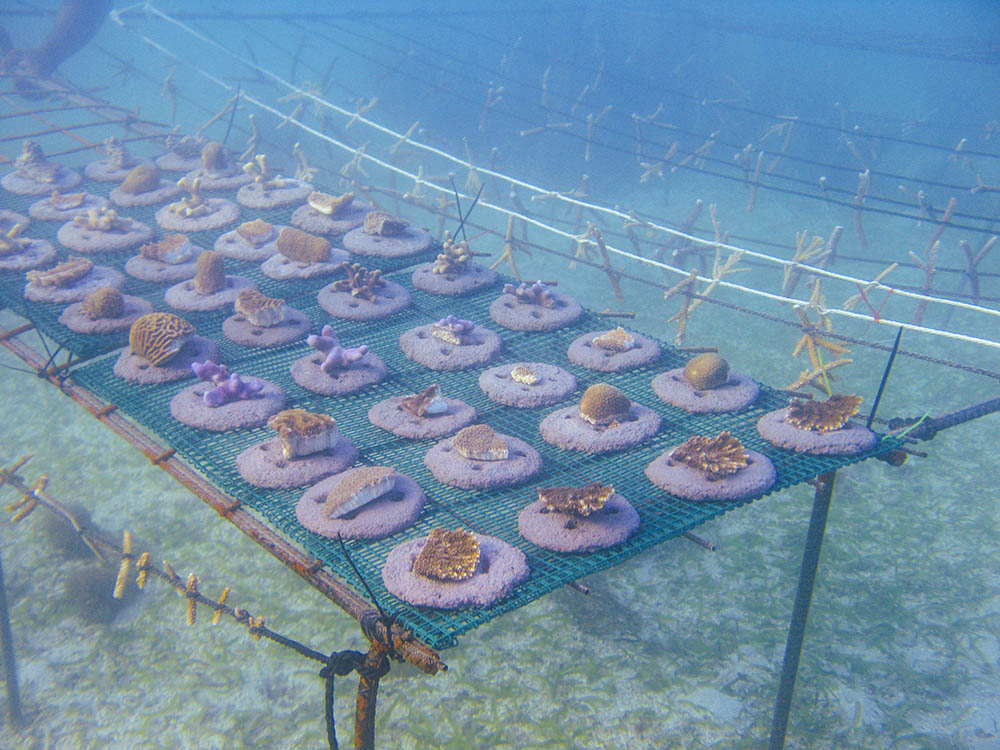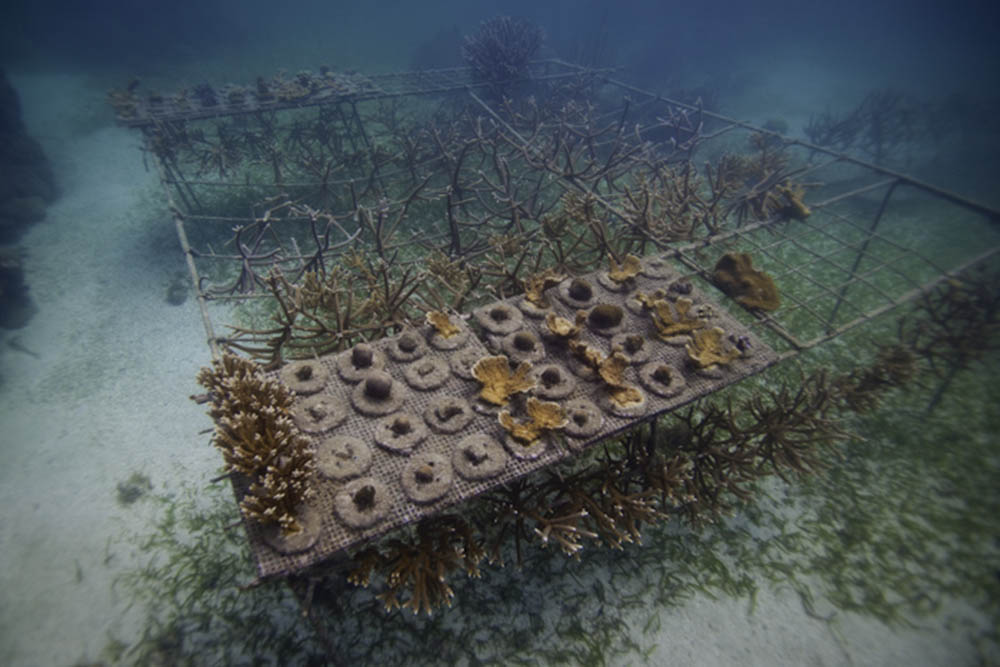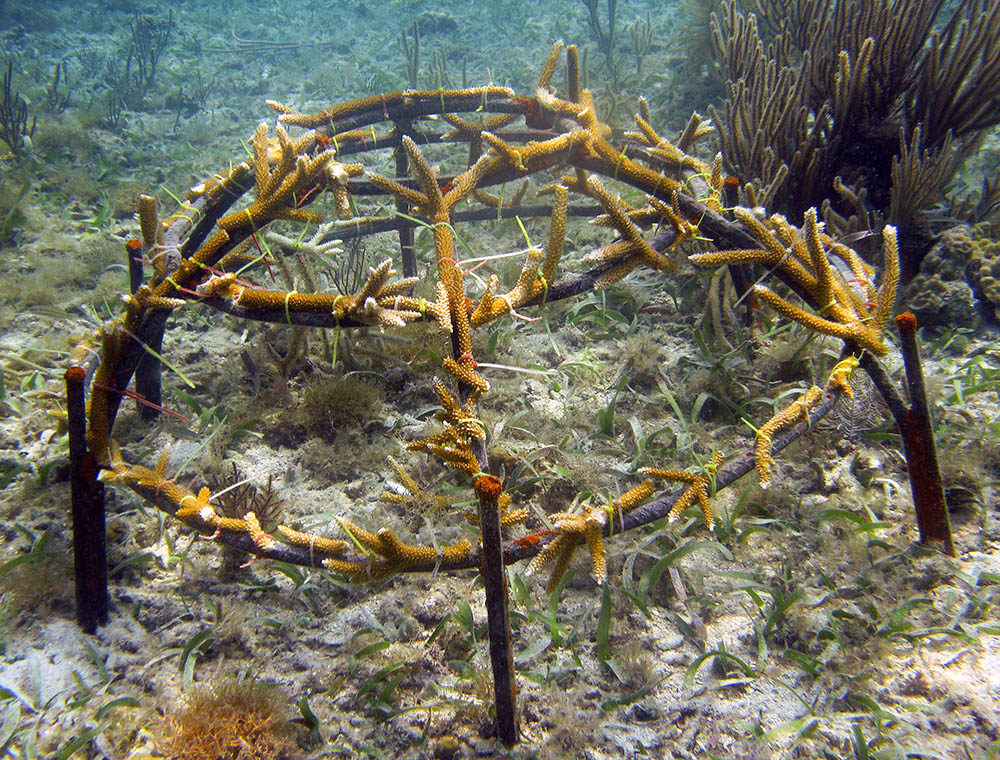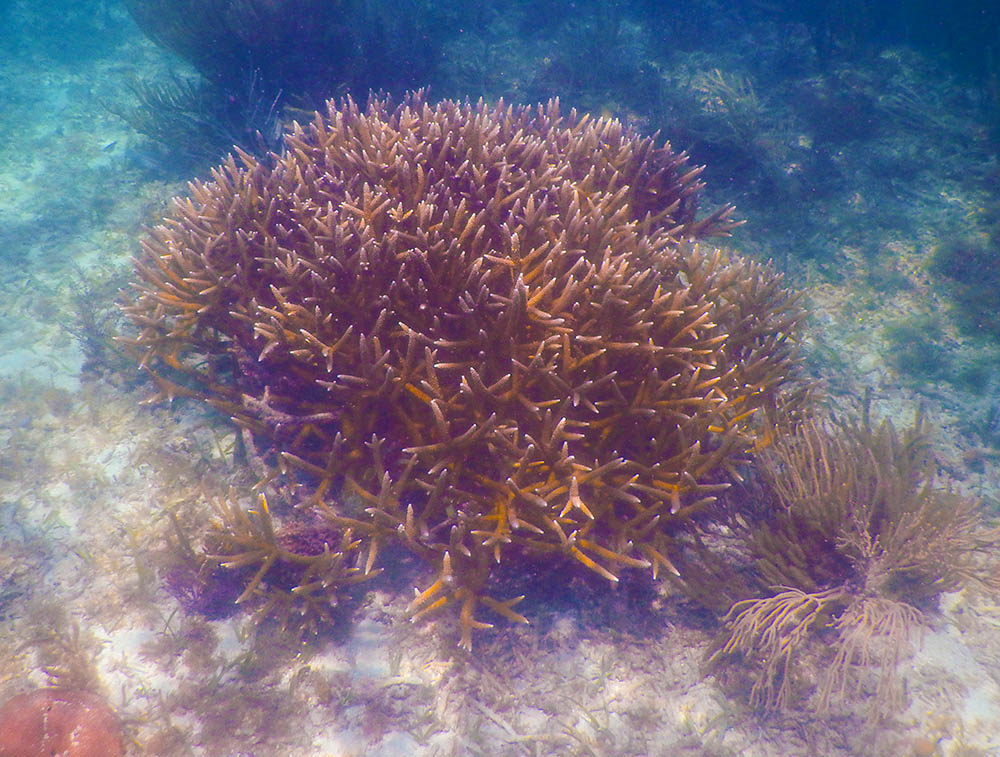Fragments of Hope, Belize
CORAL NURSERIES
The Caribbean acroporids are important reef-building and fastest-growing corals. Because they are branching, they provide habitat for hundreds of other marine species. They are adopted to deal with storm action, reproducing by fragmentation, but with the frequent and powerful storm and bleaching events in the Caribbean, their ability to quickly adapt has been troublesome.
Coral nurseries serve as a vital component towards marine conservation, hosting several species that would ultimately be added back to the reef to help regenerate areas that are stressed or damaged. Coral restoration projects are found all over the world now, with a variety of in situ and ex situ culture methodologies that have proven successful. But what works in one location might not work in another depending on several factors.
Currently, the only organization in Belize conducting reef restoration work, Fragments of Hope has installed and maintained over 23 in situ coral nurseries in southern Belize, using a variety of methods, adopted from Dr. Bowden-Kerby, that has increased coral cover by over 50% at Laughing Bird Caye National Park, alone.
In Belize, we employ three in situ coral nursery types:
A-FRAMES
This method involves using triangular-shaped metal to hold fragmented corals. In 2009, A-frames were placed with 17 acroporid genets in six different locations in southern Belize. See Bowden-Kerby and Carne (2012) (download pdf) for more info.
While the A-frames were excellent for comparing short term growth rates across nursery locations and between genotypes, faster-growing species outcompeted slower growers. Hence, the method was not best for out-planting elkhorn coral, and the frame material had variable life spans in other parts of Belize. So while there still exist three frames in southern Belize from 2009 that we continue to harvest from every year, we have discontinued using this method for the aforementioned reasons.
TABLES (with ropes and cookies)
This methodology involves using tables made of steel to support long three-strands of twisted marine polypropylene rope that would be strung between the steel frames. Each rope holds roughly 10 to 15 coral fragments that are attached from twisting apart the rope and inserting species. The table of ropes and coral fragments would ultimately be completely submerged underwater and attached firmly to the seafloor. This method supports A. cervicornis and A. prolifera very well. The A. palmata grows heavy and thus works best on cookies.
Cookies are made from Portland ll cement mixed with sand and freshwater. The small cement discs provide a platform for out-planting elkhorn corals without damaging their tissues and support their natural, upright growing position while providing a solid base on the cement cookie. The corals usually grow in the nursery for about one year, depending on the species and nursery location, then later transplanted to the reef once they have grown to a healthy size. Other coral species we have had success using cement cookies include:
Dendrogyna cylindrus Montastrea cavernosa
Undaria tenuifolia Porities furcata
Orcibella annularis Pseaudodiploria clivosa
Orcibella favelota Diploria strigosa
Orcibella franksi
DOMES
In 2009, Guatemala experienced an unraveling earthquake that affected the corals within the Belize Barrier Reef System. With no existing substrate, domes were adopted to outplant the corals.
Only a single genet of a single species was used to form a colony. These domes are considered permanent, representing both out-planted corals and a gene bank.
